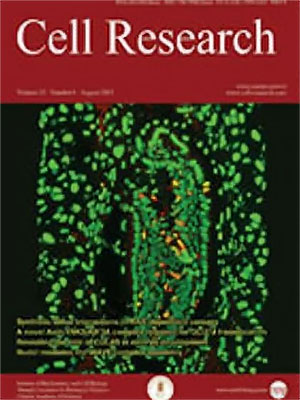
Volume 14, No 2, Apr 2004
ISSN: 1001-0602
EISSN: 1748-7838 2018
impact factor 17.848*
(Clarivate Analytics, 2019)
Volume 14 Issue 2, April 2004: 155-160
ORIGINAL ARTICLES
Inhibition of the activating signals in NK92 cells by recombinant GST-sHLA-G1α chain
Ai Yu YAO1,2, Hai Yang TANG1, Yun WANG1, Mei Fu FENG1,*, Rou Li ZHOU2,*
1Staate Key Laboratory of Biomembrane and Membrane Biotechnology, Institute of Zoology, Chinese Academy of Science, Beijing 100080, China.
2Department of Cell Biology and Medical Genetics, School of Basic Medical Sciences, Health Science Center, Peking University, Beijing 100083, China.
Correspondence: Mei Fu FENG Rou Li ZHOU(fengmf@panda.ioz.ac.cn rlzhou@bjmu.edu.cn )
The soluble HLA-G1 (sHLA-G1) isoform was found to be secreted by trophoblast cells at the materno-fetal interface, which suggests that it may act as an immunomodulator during pregnancy. In this paper, we reported that GST-sHLA-G1α chain could bind to its receptor ILT-2 on NK92 cells and then the latter recruited Src homology 2 domain-containing tyrosine phosphatase-1 (SHP-1), which consequently dephosphorylated some important protein tyrosine kinases and blocked the activation of downstream molecules such as MEK and ERK so that the cytotoxicity of natural killer (NK) cells was inhibited. These results indicated that GST-sHLA-G1α chain might be exploited in new immunotherapy strategies aiming at inducing immunotolerance during allograft, xenograft and autoimmune situations. In addition, we found that modification of O-linked β-N-acetylglucosamine (O-GlcNAc) was involved in NK cells' activating and inhibitory signals. This may provide a novel molecular target for inducing immunotolerance but needs further study.
FULL TEXT | PDF
Browse 1975


